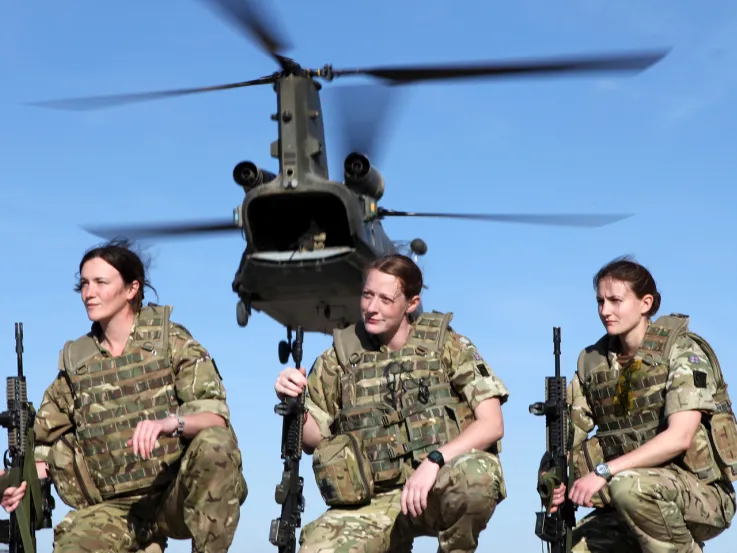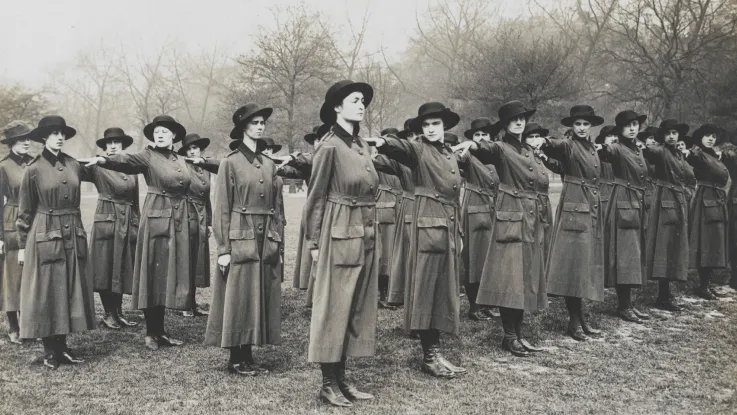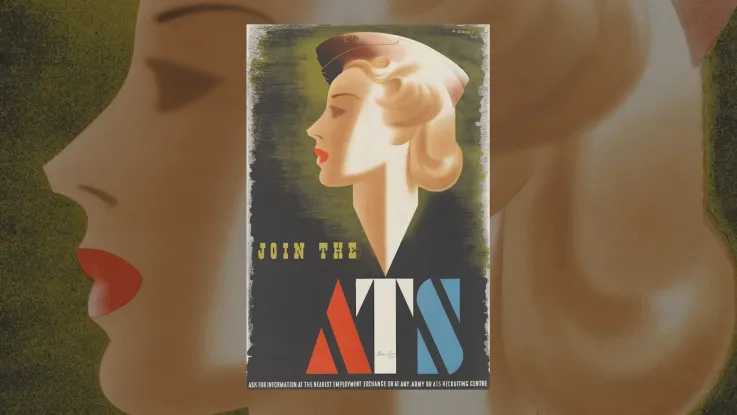Integration
In 1992, the Women’s Royal Army Corps was disbanded, and its remaining non-medical members were merged into the new Adjutant General’s Corps. This was a major milestone in women's full integration into the British Army.
By 2016, women could work in 80 per cent of the jobs available to their male counterparts. This included roles as signallers, medics, clerks, dog handlers, drivers, intelligence analysts and military police.
Prejudice
Although no longer restricted to a single, separate female unit, many women still had to work to overcome male prejudice. Private Lucy Gartshore served with 210 Battery, Royal Artillery, before joining the Royal Logistic Corps. She recalled:
‘I refer to it as a man’s world, because I’ve found that although men mean well they jump in instinctively and help you out. I was at my old battery for five and half years. We changed to light guns in the last year. It was hard to get used to as you have six people on it. That includes lifting it. It weighs 1,860 kg. There were a few people who had a problem with women being there, saying we’re not strong enough… The lads would just watch us doing it all because some didn’t think we could do it as some parts are very heavy, like the breech… [Eventually] we had definitely changed the minds of the lads as they loved us on the gun and all treated us equal.’Private Lucy Gartshore — 2016
Combat roles
Women had now been absorbed into the main body of the Army, but they were still restricted to support roles and medical positions. Much of the debate about opening up combat roles to female soldiers focused on the potential impact on battle effectiveness.
A 2002 Ministry of Defence study concluded that women in ground combat roles could adversely affect ‘unit cohesion’. Other studies questioned whether female physical and psychological characteristics were suitable for combat, often disregarding women's overall contributions.
Such misgivings existed despite the fact that women were already serving at the front. Six women were killed in action in Iraq (2003-11), and another three in Afghanistan (2001-14). Female soldiers also served as combat medics and displayed great bravery under fire.

Private Leanne Jordan guarding the British Force Headquarters main gate, Kosovo, 1999
Under fire
Private Michelle Norris of the Royal Army Medical Corps became the first woman to be awarded the Military Cross.
When her unit came under attack at Al Amarah in Iraq in June 2006, she rescued the wounded commander of her Warrior vehicle, climbing up the side of it and dragging him to safety inside, all while under sniper fire.
Her commanding officer, Lieutenant Colonel David Labouchere, said: 'Private Norris acted completely selflessly and, in the face of great danger, concentrated on her job and saved someone's life.'
Firefight
Sergeant Chantelle Taylor, also of the Royal Army Medical Corps, recalled that she chose to become a combat medic because, from the list of roles available to her as a woman, ‘it was the only one with the word “combat” in it’.
In July 2008, during her second tour of Afghanistan, her convoy was ambushed near Marjah. In the subsequent firefight, Taylor became the first female British soldier to kill an enemy combatant.
Change
The positive contributions made by women in Iraq and Afghanistan answered many questions about female suitability for the most challenging deployments.
In 2009, the Ministry of Defence changed its view. A new report concluded that there was no statistically significant evidence in relation to women and unit cohesion. Still, women remained excluded from close-combat roles.
Five years later, the Women in Close Combat Review recommended ending the ban on women in front-line infantry and armoured corps roles. And finally, in 2015, the Government announced that all armed forces roles would be open to women.
‘The chief of [the] general staff has recommended that we lift the ban on women in ground close combat, a view that has been supported by the other service chiefs. I agree with his advice and have accepted his recommendation. I have asked that this is implemented as soon as possible. It is vital that our armed forces are world class and reflect the society we live in. Lifting this ban is a major step. It will ensure the armed forces can make the most of all their talent and increase opportunities for women to serve in the full range of roles.’Prime Minister David Cameron — 2015
New roles
The ban on women serving in some parts of the Royal Armoured Corps was lifted in July 2016. Role-based training began in November of that year for women wanting to join the infantry. And, in April 2017, the first female officer was commissioned into the Royal Tank Regiment.
In October 2018, Defence Secretary Gavin Williamson announced that all combat roles were open to women, including infantry and special forces units.
‘The infantry is no place for a woman, and to permit them to serve in close combat roles is a pure politically correct extravagance… The physical bar for joining [close combat] units… need to be raised, never lowered.’Colonel Tim Collins — 2016
Concerns
Some former officers remain concerned that women will not be able to meet the same physical demands as men and lower the overall standards of fighting units.
At the end of 2015, the United States military opened up all roles to women. A US Marines task force was put to the test in a year-long study into the effects of gender integration. The results showed that all-male units outperformed integrated units, and women were six times more likely than men to be injured during training.
Studies like this will continue to feed the debate on whether women are fit to fight on the front line.














